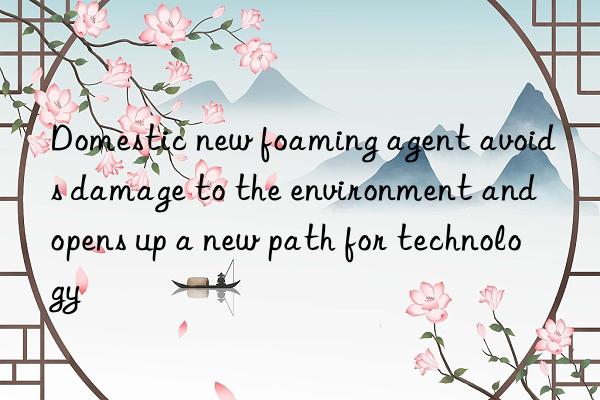
my country is the largest producer and consumer of polyurethane in the world. About 40% of the world. Currently widely used in the production of polyurethane are physical blowing agents, which either severely damage the ozone layer or are potent greenhouse gases. The chlorine-free fluorine polyurethane chemical foaming agent invented by Shandong University of Technology fundamentally avoids the damage to the environment caused by physical foaming agents. The technology and products have passed the technical appraisal of the State Intellectual Property Office and Shandong Science and Technology Department.
Polyurethane is known as one of the world's six major synthetic materials, and foaming agent is its key raw material. At present, the second-generation physical blowing agent is widely used as a hydrochlorofluorocarbon, which has a serious damage to ozone; the third and fourth-generation physical blowing agents are friendly to ozone, but they are powerful greenhouse gases with global warming potential. The value is thousands of times higher than that of carbon dioxide. To reduce emissions of the potent greenhouse gas hydrofluorocarbons. my country proposes to completely phase out the use of hydrochlorofluorocarbon blowing agents in the polyurethane foam industry by the end of 2025.
"The four generations of foaming agents developed by Europe and the United States are all physical foaming agents, monopolizing the global market, and holding the right to speak in polyurethane and other industries." Bi Yusui, the inventor of chemical foaming agents and a professor at Shandong University of Technology, said , Chlorine-free fluorine polyurethane chemical blowing agent is currently the only organic compound in the world that can react with isocyanate to generate carbon dioxide gas. Therefore, it fundamentally avoids the damage to the environment caused by chlorofluorocarbon physical blowing agents in the process of production and use, and is a brand new, green and safe blowing agent.
In addition to being blowing agents, HFCs are used in air conditioners, refrigerators, aerosols, foams and other refrigeration products. It can be widely used in many fields of national economy. Such as refrigeration and heat preservation, urban pipeline heat preservation, LNG long-distance transportation and transportation, building energy conservation, solar energy, automobiles, refrigerator freezers, sofas, mattresses and other industries.
Bi Yusui believes that this will completely change the technical route of physical blowing agents that have long been controlled by multinational companies such as Europe and the United States, and is expected to redefine the development direction of the polyurethane industry.
As a new type of chemical substance, the chemical blowing agent product was confirmed by the American Chemical Society in December last year, and the CAS number registration has been completed. Now 3 new substances have been registered; 4 national invention patents have also been declared With one PCT (Patent Cooperation Agreement) international patent, a complete intellectual property protection system has been built, which provides strong technical support for my country to dominate the future world polyurethane industry rules.



 微信扫一扫打赏
微信扫一扫打赏
